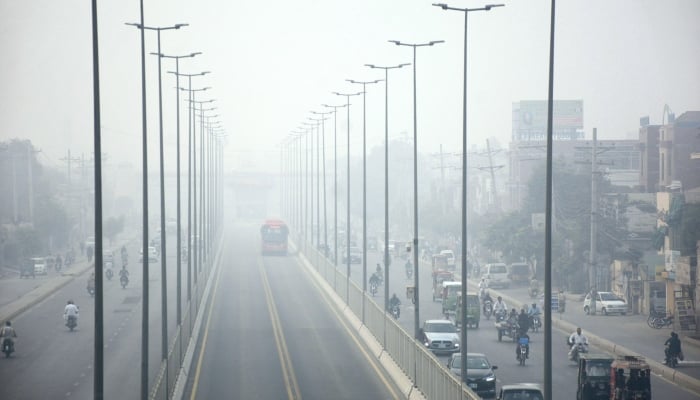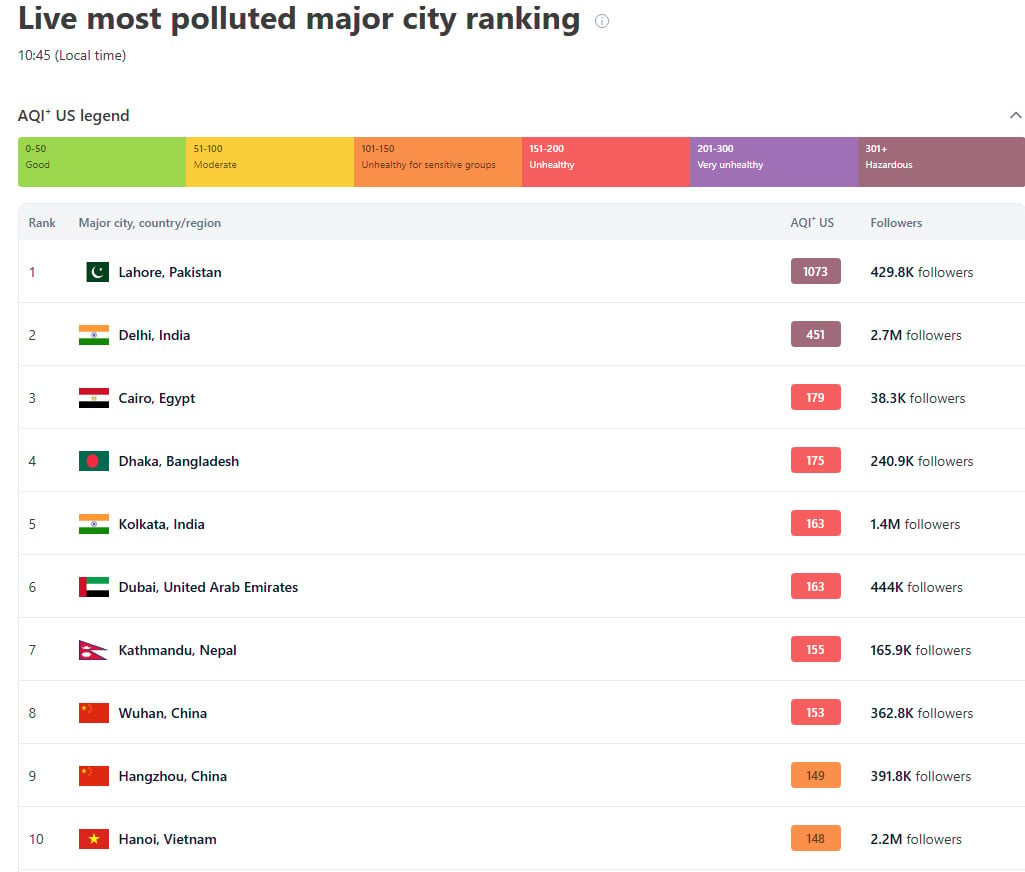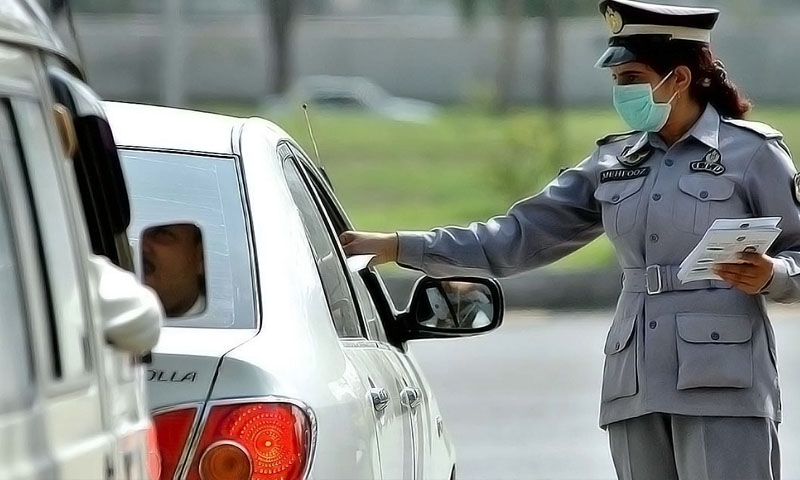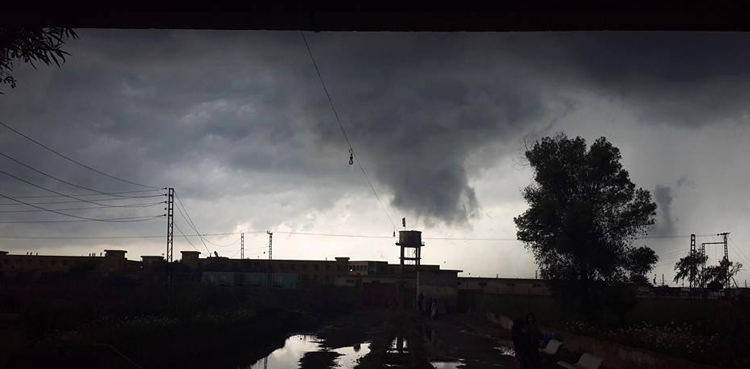
Lahore residents forced to breath highly toxic air as AQI surpasses 1000 again
”
- Smog reduces the visibility level to zero in Lahore.
- Environmental expert advises mask wearing, staying hydrated.
- Weather to remain dry in most districts of Punjab.
Residents in Lahore continued to struggle under “hazardous” air quality as the air quality index (AQI) in Punjab capital exceeded the 1000 once again on Sunday, making it the most polluted city in the world.
As per the Swiss air quality monitor, IQAir, level of deadly PM2.5 pollutants — the fine particulate matter in the air that causes the most damage to health — peaked at 613, which is 122.6 times higher than the level considered unhealthy by the World Health Organisation,
Meanwhile, the AQI, which measures a range of pollutants, spiked at 1073 — even higher than yesterday’s “unprecedented” 1067 — the real-time list of world’s most polluted cities showed.
Thick smog shrouding the megapolis also reduced the visibility to zero as the Punjab government failed to bring down the pollution levels.

An environmental expert reiterated the advise that the citizens should avoid going out of their homes without masks, and keep themselves hydrated besides washing face in short intervals.
For days, the city of 14 million people has been affected by smog mix of fog and pollutants caused by low-grade diesel fumes, smoke from seasonal agricultural burning and cooler temperatures.
The city battles smog each year in winter. Seasonal crop burn-off by farmers on the outskirts of Lahore also contributes to toxic air, which according to the WHO, can cause strokes, heart disease, lung cancer besides respiratory diseases.
Pollution-led smog in the city is causing serious problems for residents, especially those who work outdoors. Citizens toiling in polluted air have reported breathing difficulties, coughing and burning eyes, affecting both their health and productivity.
The Punjab government has been scrambling to reduce the pollution with multiple actions, and has renewed the smog alert, warning citizens of injurious effects of persisting bad air quality on health.
To fight off smog, authorities have imposed a “Green Lockdown” in the most polluted zones of Lahore, completely banning construction activities, entrance of “Qingqi motorcycle-rickshaws”, operation of commercial generators, open food cooking points and food outlets using charcoal, coal or wood without installation of proper emission control system.
The government has also introduced mandatory mask-wearing and restricted outdoor activities, including school assemblies and playtime to keep the citizens safe from severe smog.
Meanwhile, the transport department is continuing crackdown on the vehicles causing environmental pollution.
However, the measures appear ineffective in mitigating the impact of smog as its continues to rise across Punjab, causing a sharp deterioration in air quality.
The central and southern regions of the province were also engulfed in harmful smog.
The Pakistan Meteorological Department (PMD) has said that Multan, Sialkot, Narowal, Gujranwala, Sheikhupura, Jhang, Bahawalpur, and Dera Ghazi Khan will experience the smog, with mainly dry weather in most districts of Punjab.
Weather experts say the smoke-laden air from neighbouring Indian capital New Delhi has contributed to increase in smog levels.
Delhi also reels under intensifying smog, mostly as the second most polluted city on the IQAir’s list. It retained its position today as well with an AQI of 511 around 10am.
India has called for collaboration and regional cooperation in South Asia to tackle the deteriorating air pollution dilemma after Punjab Chief Minister Maryam Nawaz floated the idea of engaging in diplomatic efforts with India.
”




